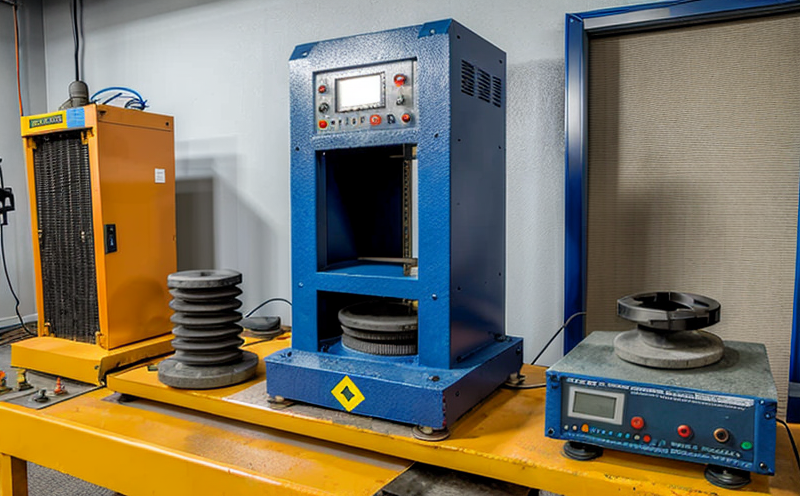Equipment and devices used in vibration testing
Unlocking Reliability The Essential Role of Equipment and Devices in Vibration Testing
In todays fast-paced business landscape, ensuring the reliability and durability of products is crucial for success. With increasing competition and evolving customer expectations, companies must continually push the boundaries of innovation while maintaining the highest standards of quality. One critical laboratory service that plays a pivotal role in achieving this balance is vibration testing. At Eurolab, we specialize in providing expert vibration testing services to businesses seeking to validate their products performance under various operating conditions.
In this comprehensive guide, well delve into the world of equipment and devices used in vibration testing, highlighting the advantages of incorporating this service into your product development cycle. From identifying potential flaws to optimizing performance, understanding the importance of vibration testing is essential for any business aiming to stay ahead of the curve.
The Significance of Vibration Testing
Vibration testing, also known as dynamic testing or shock testing, involves subjecting a product or component to controlled vibrations to simulate its behavior under real-world conditions. This laboratory service is used across various industries, including aerospace, automotive, consumer goods, and industrial equipment, among others.
Why is vibration testing so critical? Here are just a few compelling reasons
Ensures reliability Vibration testing helps identify potential weaknesses or design flaws that can lead to premature failure, ensuring products meet the required standards for durability and longevity.
Optimizes performance By simulating real-world operating conditions, vibration testing enables manufacturers to fine-tune their products performance, leading to improved efficiency and reduced energy consumption.
Meets regulatory requirements Many industries have strict regulations regarding product safety and reliability. Vibration testing helps companies comply with these standards, reducing the risk of costly re-designs or recalls.
Equipment and Devices Used in Vibration Testing
Eurolabs state-of-the-art facilities are equipped with a range of specialized equipment and devices designed to perform various types of vibration tests. Some of the key pieces of equipment used in our laboratory include
Vibration testing machines These powerful devices generate controlled vibrations, simulating real-world conditions such as engine startup, road roughness, or seismic activity.
Shakers Also known as electrodynamic shakers, these devices use electromagnetic forces to create precise and controlled vibrations.
Dampers Used in conjunction with vibration testing machines, dampers help absorb and dissipate energy, ensuring accurate results.
Accelerometers These sensitive instruments measure acceleration levels, providing valuable data on product performance under various operating conditions.
Key Benefits of Vibration Testing
Here are the key benefits of incorporating vibration testing into your product development cycle
Reduces costs By identifying potential flaws early in the design process, companies can avoid costly re-designs and reduce waste.
Enhances safety Vibration testing ensures products meet regulatory requirements, reducing the risk of accidents or injuries.
Improves performance By simulating real-world conditions, manufacturers can fine-tune their products performance, leading to increased efficiency and reduced energy consumption.
Some additional benefits include
Improved product lifespan
Enhanced customer satisfaction
Competitive advantage
Reduced warranty claims
QA Frequently Asked Questions About Vibration Testing
At Eurolab, we understand that vibration testing can be a complex topic. Here are some frequently asked questions and answers to help you better understand the process
Q What types of products benefit from vibration testing?
A A wide range of products, including consumer goods, industrial equipment, automotive components, and aerospace systems, can benefit from vibration testing.
Q How do I prepare my product for vibration testing?
A Before sending your product to Eurolab, ensure it is properly packaged and prepared according to our guidelines. This may involve attaching sensors or other devices to facilitate accurate measurement.
Q What types of vibrations are simulated during testing?
A Our facilities can simulate various types of vibrations, including sine, random, and transient loads, as well as shocks and drops.
Q How long does vibration testing typically take?
A The duration of vibration testing varies depending on the product and test requirements. In general, tests can last anywhere from a few minutes to several days or even weeks.
Conclusion
In conclusion, equipment and devices used in vibration testing play a vital role in ensuring product reliability, performance, and safety. By understanding the importance of vibration testing and incorporating this service into your product development cycle, youll be better equipped to meet regulatory requirements, reduce costs, and enhance customer satisfaction.
At Eurolab, our team of experts is dedicated to providing accurate and reliable results. With state-of-the-art facilities and a range of specialized equipment, were committed to helping businesses like yours unlock the full potential of their products.
Dont wait contact us today to learn more about how vibration testing can benefit your business.




